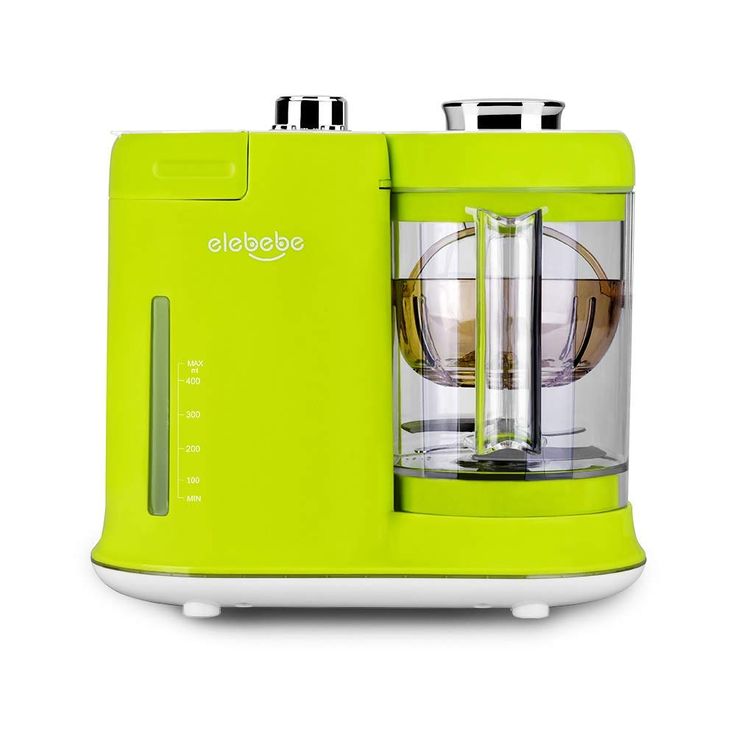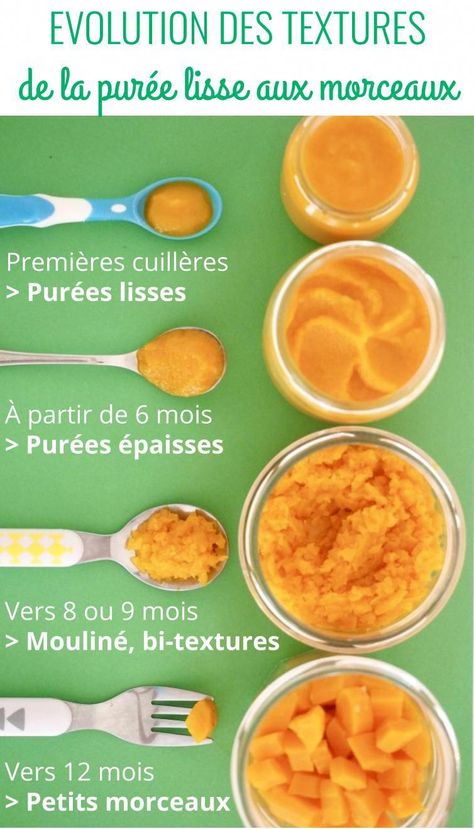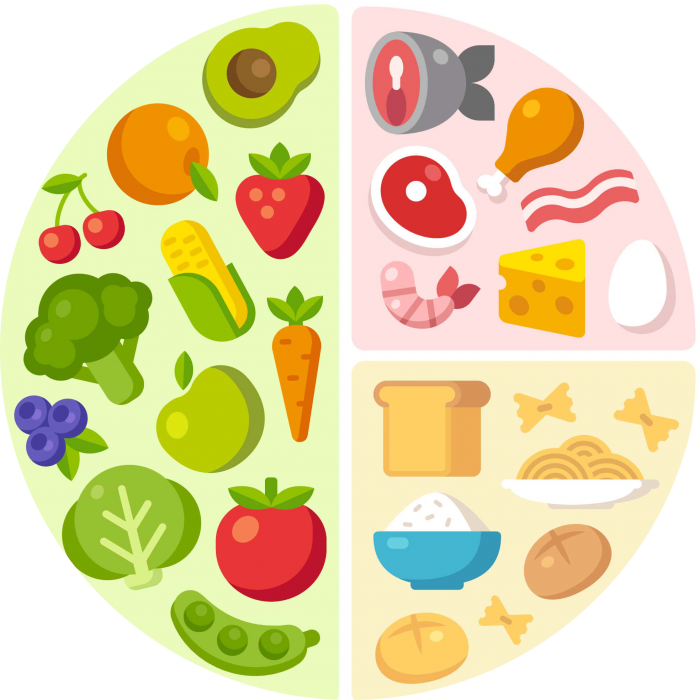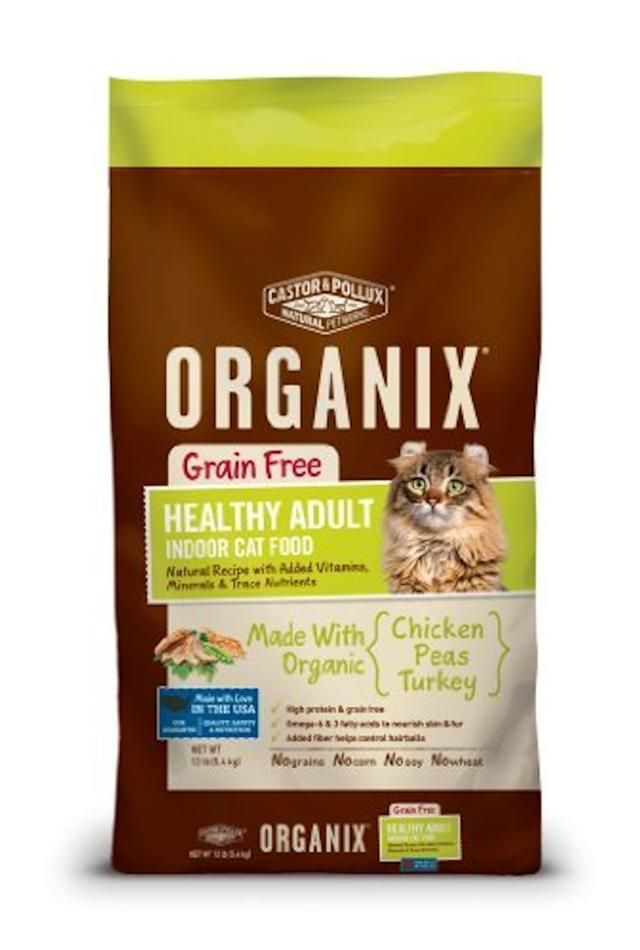Nipple piercing baby feeding
Does Nipple Piercing Affect Breastfeeding?
A nipple piercing is a form of self-expression. But if you’re breastfeeding (or thinking about breastfeeding), you might wonder how a piercing will affect nursing.
For example: Can I breastfeed with a pierced nipple? Can a nipple piercing cause problems while breastfeeding? And most importantly: Is it safe to breastfeed with a nipple piercing?
This article will dive into this subject and provide need-to-know information about nipple piercings and breastfeeding.
The short answer to this question is, yes. So if you have a piercing or you’re thinking about getting one, this likely doesn’t affect your ability to nurse, although you should wait until the piercing fully heals before breastfeeding.
You should be okay to breastfeed because nipple piercings typically don’t damage milk production. Breast milk is produced in your mammary glands, which are located in the breast tissue of female mammals, behind the nipple.
After giving birth, these glands produce milk whether or not you have a piercing. But while having a nipple piercing doesn’t stop the production of milk, having a piercing could slightly interfere with your milk flow.
This doesn’t happen to everyone. But it might happen if a piercing blocks or causes damage to ducts in the nipple and, as a result, milk doesn’t flow as easily.
You should also be aware of other issues that can arise when breastfeeding with a nipple piercing.
Again, some women breastfeed fine with a piercing, and they don’t experience any adverse effects. Others, on the other hand, do run into problems — even if only temporary.
Along with a piercing possibly blocking the tiny ducts that carry milk from the nipple, some women experience scarring inside of the nipple after a piercing.
Scarring might not be visible to the eye, but its presence can block milk ducts and stop or inhibit the flow of milk from the breast. The likelihood of scarring is higher when there are multiple piercings in a single nipple.
Another thing to keep in mind is that nipple piercings can lead to breast problems such as mastitis or a breast abscess.
Mastitis is a type of inflammation that develops as a complication of a blocked milk duct. It can also occur if you have a bacterial infection in the breast, such as a staph infection (Staphylococcus aureus). Symptoms include breast soreness, redness, and swelling.
The staph bacteria is normally found on the skin, so mastitis might develop if you frequently touch the piercing site with your hands. Infections can also occur when piercings take place in unhygienic conditions, or when the skin isn’t properly disinfected prior to piercing.
A breast abscess can form as a complication of a bacterial infection. These can cause a painful, swollen pus-filled lump. Mastitis typically improves on its own, but you’ll need antibiotics to treat a breast infection or a breast abscess.
Also, if an old piercing leaves a hole in your nipple, you may have milk leakage from the piercing site. This can generally be addressed by using breast pads to absorb the leaking milk, but this change to the flow may cause difficulties for some infants.
This can generally be addressed by using breast pads to absorb the leaking milk, but this change to the flow may cause difficulties for some infants.
It can take anywhere from 6 months to 12 months for a nipple piercing to fully heal. Because saliva contains bacteria, wait until the piercing fully heals before breastfeeding to reduce the risk of infection.
Once a nipple piercing fully heals, make sure you take measures to breastfeed safely. Even when nipple jewelry appears secure in your nipple, it is preferable to remove the jewelry prior to breastfeeding.
This eliminates choking hazards, as the jewelry could accidentally come out in your baby’s mouth. Also, removing jewelry might make it easier for your baby to latch onto your breasts and prevent any possible damage to their mouth.
Ideally, jewelry should be removed completely for as long as you intend to breastfeed. This decreases the chances of infection or other complications.
If you decide to only remove nipple jewelry for individual feedings, it is essential that you properly clean the jewelry before reinserting after every single feeding:
- Always wash your hands with antibacterial soap before handling a nipple piercing, whether you’re putting in or taking out jewelry.

- Before reinsertion, thoroughly clean the nipple jewelry with warm water and a gentle unscented soap. You can also soak the jewelry in sea salt since it’s a natural antiseptic.
- Allow the jewelry to completely dry before reinserting.
Even though it’s okay to breastfeed with a nipple piercing, you shouldn’t get a piercing while you’re pregnant or breastfeeding. Actually, most piercers will not pierce the nipples during this time, considering that it takes up to 12 months for the nipple to fully heal.
If you’re thinking about getting a piercing — and you also want to have a baby — get a piercing at least one year before you’re ready to conceive. Or, wait until after you’ve given birth and preferably after postpartum healing before getting one.
There’s always the risk of infection, which can happen when piercings happen in unhygienic conditions. For this reason, only use reputable piercing establishments.
Don’t be afraid to ask questions. What measures does the piercing establishment take to reduce the risk of infection? Make sure the establishment and piercer are licensed with your state’s department of health. Ask to see these credentials.
Ask to see these credentials.
Your piercer should use sterile piercing needles, wear gloves, wash their hands before beginning, and sterilize your skin.
Also, take aftercare precautions to prevent infections after a piercing. This involves not touching your piercing with dirty hands, and not allowing others to touch your piercing either.
Don’t put lotion, soap, or chemicals on the nipple until it fully heals. And don’t change out your nipple jewelry until your piercer says it’s okay.
Limit the use of cigarettes, caffeine, alcohol, and aspirin after a nipple piercing. These substances can act as blood thinners, making it harder for your blood to clot. This can prolong the healing process.
Keep an eye out for signs of an infection. You can expect some discomfort or tenderness after a piercing. However, signs of an infection include increased pain, discharge from the piercing site, odor from the piercing site, and developing a fever.
See your doctor if you develop any signs of infection.
A nipple piercing can be a fun form of self-expression. But if you’re pregnant or thinking about getting pregnant, take precautions to limit how a nipple piercing affects nursing.
As a general rule of thumb, don’t get a piercing if you plan on having a baby within the next year or if you’re currently breastfeeding. It can take up to 12 months for the piercing to fully heal.
Nipple Piercings - La Leche League International
Nipple piercings have become increasingly popular in recent years and you may be wondering if it safe to breastfeed your baby if you already have pierced nipples. You might be thinking of getting your nipples pierced and wish to continue breastfeeding without interruption.
Is it safe to breastfeed with nipple piercings?That depends on whether you are breastfeeding with holes from previous piercings or breastfeeding with jewelry still in place. Nipple piercings can impact breastfeeding for both mother and baby. Common concerns for mom may include nerve damage that impacts the milk ejection reflex or scarring that obstructs the milk flow which can, over time, affect milk production. There have been reports of mastitis and abscesses from previous nipple piercings as well. Often the longer the time since the piercings were initially placed and the birth of the baby the better the outcome.
Common concerns for mom may include nerve damage that impacts the milk ejection reflex or scarring that obstructs the milk flow which can, over time, affect milk production. There have been reports of mastitis and abscesses from previous nipple piercings as well. Often the longer the time since the piercings were initially placed and the birth of the baby the better the outcome.
Breastfeeding with piercings in place can make it difficult for the infant to latch-on correctly, and increases the risk of choking if the jewelry becomes loose and dislodges. In addition, there may be damage to the soft tissues inside the infant’s mouth from the jewelry. On the other hand, the extra holes created by the piercings often lead to a faster milk flow which some infants struggle to manage. Laid back breastfeeding positions and extra nursing pads to catch the excess milk can help with this.
It is recommended and best practice to completely remove nipple jewelry during the entire time you plan to breastfeed whether that is 6 weeks, 6 months, a year or longer. While you run the risk of having your piercings close up, it is safest for your baby. Some mothers however choose to remove their jewelry during each breastfeeding session. It is vitally important that you wash your hands before removing and reinserting your jewelry and that you keep the jewelry scrupulously clean to prevent infection in your nipples which could lead to mastitis or illness in your infant. The final option, and one that is generally NOT recommended, is to leave the jewelry in place and make sure to tighten the jewelry completely before each session. Maintain a very close watch on your infant’s latch, and behaviors at the breast, to prevent choking or damage to his or her mouth.
While you run the risk of having your piercings close up, it is safest for your baby. Some mothers however choose to remove their jewelry during each breastfeeding session. It is vitally important that you wash your hands before removing and reinserting your jewelry and that you keep the jewelry scrupulously clean to prevent infection in your nipples which could lead to mastitis or illness in your infant. The final option, and one that is generally NOT recommended, is to leave the jewelry in place and make sure to tighten the jewelry completely before each session. Maintain a very close watch on your infant’s latch, and behaviors at the breast, to prevent choking or damage to his or her mouth.
Most piercers will not knowingly pierce a pregnant or breastfeeding mother. This is for liability reasons on the piercers part, but also to prevent bacteria from entering the newly pierced nipples, and to allow the nipples time to heal properly. It is suggested that mothers wait until 3-4 months after weaning before getting nipple piercings as hormonal changes during breastfeeding can affect the healing process. Reputable piercers will have a waiver for the client to sign that asks about pregnancy and breastfeeding.
It is suggested that mothers wait until 3-4 months after weaning before getting nipple piercings as hormonal changes during breastfeeding can affect the healing process. Reputable piercers will have a waiver for the client to sign that asks about pregnancy and breastfeeding.
Nipples are pierced in various configurations. They can be pierced horizontally, vertically, diagonally or any combinations of the above. One or both nipples may be pierced at one time. Jewelry used can include various metals (gold, silver, stainless steel), glass, acrylic, bone or stone. Proper placement and sizing of the jewelry is important to prevent embedding or rejection. After piercing it can take a minimum of 6 months for nipples to heal, but can often take up to a year or more. Some women notice increased irritation and ‘flare-ups’ during their menstrual cycles.
General information about piercings also applies to breastfeeding women. Local and systemic infections are the most prevalent risks of any piercings. Local infections can occur when the recommended aftercare regimen is not followed. Aftercare includes keeping the piercings clean with mild soap and water, salt soaks 4-6 times a day, and rotating the jewelry. Systemic infections occur when universal precautions are not followed by the piercer and can include such diseases as hepatitis, tetanus, and HIV. It is very important to screen the piercer and the shop carefully, checking with the local health department for local laws and regulations. Professional piercers will follow universal precautions such as sterilization of the forceps using an autoclave. The use of sterile jewelry, single-use gloves and needles, bagging of equipment to avoid cross contamination, and thorough hand washing with disinfectant soap.
Local infections can occur when the recommended aftercare regimen is not followed. Aftercare includes keeping the piercings clean with mild soap and water, salt soaks 4-6 times a day, and rotating the jewelry. Systemic infections occur when universal precautions are not followed by the piercer and can include such diseases as hepatitis, tetanus, and HIV. It is very important to screen the piercer and the shop carefully, checking with the local health department for local laws and regulations. Professional piercers will follow universal precautions such as sterilization of the forceps using an autoclave. The use of sterile jewelry, single-use gloves and needles, bagging of equipment to avoid cross contamination, and thorough hand washing with disinfectant soap.
There is little evidence surrounding the safety of nipple piercings and breastfeeding. Breastfeeding with nipple piercings in place can potentially cause choking and/or damage to the infant’s mouth. While breastfeeding with previously pierced holes may be problematic if there is scarring or nerve damage. On the other hand many women go on to breastfeed successfully with pierced nipples, taking extra precautions regarding their jewelry, and the use of different breastfeeding positions to minimize and leaking and faster flow of milk to the baby. It is not recommended to get nipple piercings while breastfeeding. Carefully weigh your options and seek out a professional piercer. You can chose to adorn your nipples with beautiful piercings, and give your baby the baby the best start in life by breastfeeding, with careful consideration of the risks and benefits.
On the other hand many women go on to breastfeed successfully with pierced nipples, taking extra precautions regarding their jewelry, and the use of different breastfeeding positions to minimize and leaking and faster flow of milk to the baby. It is not recommended to get nipple piercings while breastfeeding. Carefully weigh your options and seek out a professional piercer. You can chose to adorn your nipples with beautiful piercings, and give your baby the baby the best start in life by breastfeeding, with careful consideration of the risks and benefits.
Angel, E. (2009). The piercing bible : the definitive guide to safe body piercing. Berkeley, Calif.: Celestial Arts.
Armstrong, M., Caliendo, C., & Roberts, A. (2006). Pregnancy, lactation and nipple piercings. AWHONN Lifelines, 10(3), 212-217.
Armstrong, M., Koch, J., Saunders, J., Roberts, A., & Owen, D. (2007). The hole picture: risks, decision making, purpose, regulations, and the future of body piercing. Clin Dermatol, 25(4), 398-406.
Clin Dermatol, 25(4), 398-406.
Both, D. F., Kerri. (2008). Breastfeeding: An illustrated guide to diagnosis and treatment. Marrickville, NSW: Elsevier Australia.
Caliendo, C., Armstrong, M., & Roberts, A. (2005). Self-reported characteristics of women and men with intimate body piercings. J Adv Nurs, 49(5), 474-484.
DeBoer, S., Seaver, M., Angel, E., & Armstrong, M. (2008). Puncturing myths about body piercing and tattooing. Nursing, 38(11), 50-54.
Ferguson, H. (1999). Body piercing. BMJ, 319(7225), 1627-1629.
Garbin, C., Deacon, J., Rowan, M., Hartmann, P., & Geddes, D. (2009). Association of nipple piercing with abnormal milk production and breastfeeding. JAMA, 301(24), 2550-2551.
Gray-Wolfstar, T., & Wolfstar, G. (2007). Tattoos, body piercing, and nursing: a photo essay. Interview by Jason P Smith. Am J Nurs, 107(4), 54-57.
HMBANA, H. M. B. A. o. N. A. (2012). Guidelines for Establishment and Operation of a Donor Human Milk Bank. Raleigh, NC: Human Milk Banking Association of North America, Inc.
Raleigh, NC: Human Milk Banking Association of North America, Inc.
Hudson, K. L. (2009). Living canvas : your total guide to tattoos, piercing, and body modification. Berkeley, CA: Seal Press : Distributed by Publishers Group West.
Riordan, J., & Wambach, K. (2009). Breastfeeding and human lactation (4th ed.). Sudbury, MA: Jones and Bartlett Publishers.
Roche-Paull, Robyn. (2009). Body Modifications and Breasfeeding. New Beginnings, 29(4), 4-8.
Stirn, A. (2003). Body piercing: medical consequences and psychological motivations. Lancet, 361(9364), 1205-1215.
Wilson-Clay, B., & Hoover, K. (2005). The breastfeeding atlas (3rd ed.). Manchaca, Tex.: LactNews Press.
Contributed by Robyn Roche-Paull, RNC-MNN, BSN, IBCLC, Retired LLL Leader.
How much does a piercing cost and what complications can there be
Polina Morovova-Sheiner
psychologist, author of the telegram channel Sheiner me
Author profile
I wanted to pierce the nipples after the birth of a child, when I was breastfeeding my son.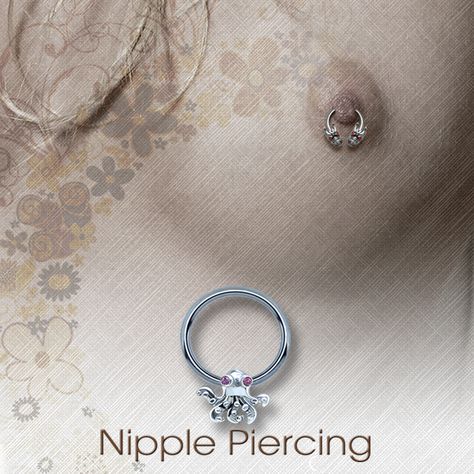
I breastfed for two years. All the friends who also had this experience claimed: if the breasts were small before breastfeeding, then after that they will return to about the same size.
My one didn't come back. I finished feeding and was left with a breast three times larger, longer, not in the place where I last saw her. In addition, there were huge areolas and nipples.
Even before that, I had a crazy dream of getting my nipples pierced. I think it's beautiful, spectacular, unusual, and in addition, it felt like a way to say to myself: "Yes, my breasts have changed, but they are still beautiful."
I'll tell you how I finally decided to get a nipple piercing, how much it cost and how it ended.
Go see a doctor
Our articles are written with love for evidence-based medicine. We refer to authoritative sources and go to doctors with a good reputation for comments. But remember: the responsibility for your health lies with you and your doctor.![]() We don't write prescriptions, we make recommendations. Relying on our point of view or not is up to you.
We don't write prescriptions, we make recommendations. Relying on our point of view or not is up to you.
What is body piercing
According to GOST, cosmetic piercing is a service for installing special jewelry in the soft tissues of the ears, cartilaginous areas of the nose and ears, as well as in the skin folds of the body in order to meet the aesthetic needs of the client.
Cosmetic piercing — National Standard of the Russian Federation
The website of the International Association of Piercers has a similar definition: piercing is the insertion of jewelry into holes in body tissues for cultural, religious or any other purpose.
Piercing is not possible in any random place on the body. There is a list of body parts and types of punctures for them. Each site has its own characteristics, techniques and decorations. For example, ear piercings can be done in five places in five different ways.
Who regulates the work of piercers and studios
In Russia, there are official and unofficial regulations that regulate the work of piercers.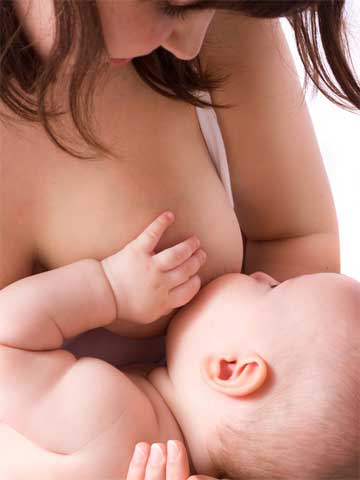
Federal Law on consumer protection No. 2300-1
Official regulations is the state standard and the Federal Consumer Protection Act.
The State Piercing Standard is a fresh document, it came into force on January 1, 2022. Describes the requirements for the master, qualifications, premises, tools.
The standard and the Federal Law on the protection of consumer rights can be referred to in a claim or in court if the service was provided of poor quality. For example, the master made a puncture incorrectly and there were problems with it.
Community 08/16/21
Can I come to school with colored hair or piercings?
Appendix to the guest with the main indicators of the quality of piercing services Licensing of piercing salons. A license is a special permit for work or services for an organization or entrepreneur. Licensing is regulated by a separate federal law, which contains a list of services for which you need to obtain a license.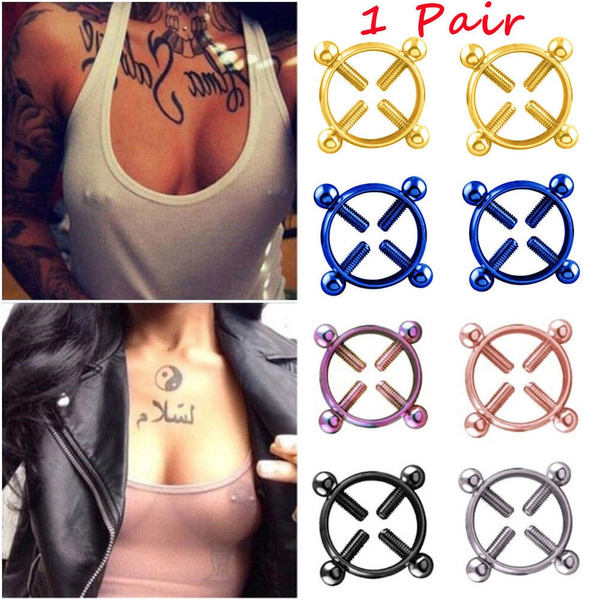
Federal Law on licensing certain types of activities
For example, a license is needed for medical activities. What is included in the types of medical activities is prescribed separately in a special government decree.
Government Ordinance on Medical Licensing
The laws do not explicitly state that piercing requires a license. But there is an explanation based on an analysis of the prevailing judicial practice. It states that piercing, massage, tattooing, ear piercing are medical procedures, because medical massage and cosmetology are medical services.
Unofficial regulations do not have the force of law. However, they are written by professional piercers, legal and medical consultants. They explain in detail the rules for the work of piercing and safety specialists from the point of view of science, physiological processes and common sense. If the master and the studio adhere to both the guests and unofficial standards, then they should be trusted more.
Unofficial guidelines can be found on the websites of the following organizations:
- International Association of Professional Piercers in California. It is an international non-profit organization. They draw up norms and rules for safe punctures, consult, hold public conferences and meetings. The site has a Russian version, and Russia has its own branch.
- Russian Association of Professional Piercers. It works on the same principles as the international one, but it includes Russian masters and studios.
International Association of Piercers
Russian Association of Professional Piercers
This is a piece of a large detailed instruction from the piercing boutique website How to check the salon. First of all, it is worth checking if the studio has a license for medical procedures. This can be done on the Roszdravnadzor website. You need to drive into the search the name of the organization, its OGRN or TIN of the master.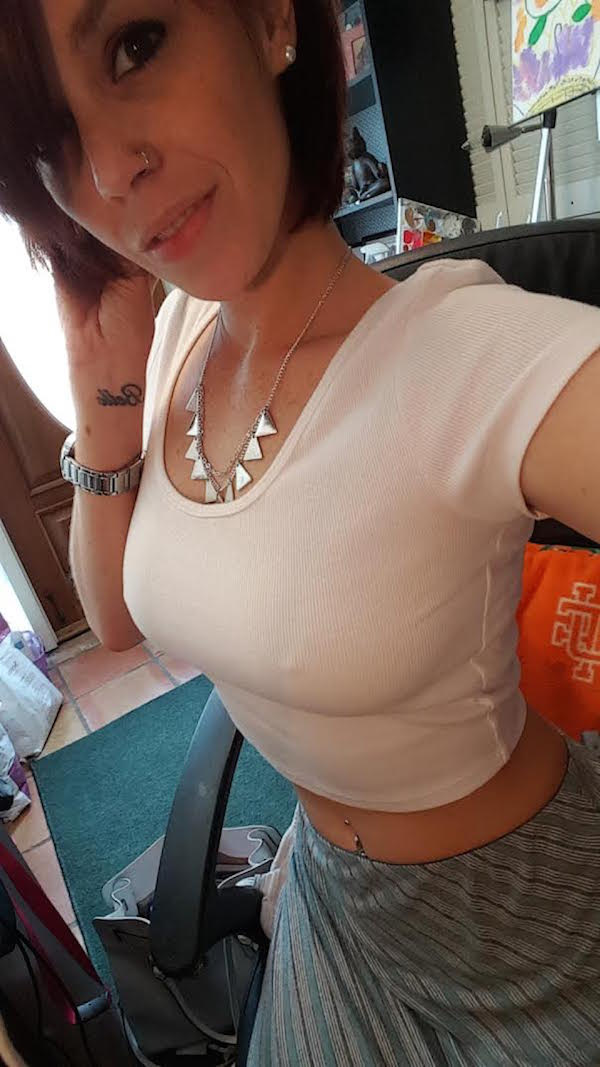
Then you should see if the studio or a particular master is a member of the Russian or international association of piercers. This can be done through the locator of masters on the websites of Russian or American associations.
It's also good if the studio's website has healing and care instructions - they are usually almost the same as on association websites. Of course, this does not guarantee the quality of work, but it is likely that the craftsmen are familiar with modern rules.
What to do? 11.02.20
Should employees of beauty salons have medical records?
This is what the license search window looks like in Roszdravnadzor There I found information about the salon where I did the piercing, it has a licenseHow piercing should be done
The guest does not have detailed information about the processes and features of piercing. It can be found on the websites of associations - it is their task to tell and teach safe piercing.
What a piercing studio should be like - Russian Association of Professional Piercers
Frequently asked questions about piercing - International Piercing Association
Here are some of the most important provisions about the work of a piercer:
- The master works in a specially equipped studio. It consists of several rooms: a hall with a waiting room, a treatment room, a sterilization room, storage and a toilet.
- Tools for work must be sterile. You can use disposable and reusable instruments. Reusable should be sterilized in special equipment. All packages must be opened only in the presence of the client. The puncture itself is done only with sterile disposable needles.
- The foreman must wear gloves.
- Jewelery must be stored in a separate container, closed, either in a sterile organizer or sterilized before donning.
- After the procedure, the master should give detailed recommendations for care.
- The master is obliged to leave his contacts: it is important to stay in touch at least during the most painful period, from two to four weeks, in which case you can write and ask.

Which jewelry is suitable for piercing
Only sterile new jewelry made of titanium, niobium, gold, nickel-free platinum alloy or borosilicate glass can be inserted into a fresh piercing. This is due to the fact that the material must withstand sterilization, as well as be inert, that is, not cause allergies and irritation.
What piercing jewelry should look like - Russian Association of Professional Piercers
Jewelry should also be smooth, with a mirror finish, without scratches, nicks and rough seams. Any irregularities in the jewelry will delay the healing of the wound.
Any irregularities in the jewelry will delay the healing of the wound.
Thread type - better internal, especially for body piercings.
This is what my barbell looks like. Titanium, mirror polished, internal thread. The part that enters the puncture is as smooth as possible with the ends slightly rounded inward. There is a screw thread only on the winding - the ball. The screw does not touch the puncture, and the wrap is held very tightly. You always have to make an effort to promote. I have one such barbell in my nipple, and the second one is in my earWhat piercing is done for
There is an important contradiction between what is written in Russian guests and on the websites of piercer associations.
Why Piercers Vs Pistols - Russian Association of Professional Piercers
Problems with Pistols - International Association of Professional Piercers
Gost says that there are two types of piercings - a special hollow needle and a gun with a stud. It turns out that a pistol puncture is legitimate. Piercer associations are radically against pistols.
It turns out that a pistol puncture is legitimate. Piercer associations are radically against pistols.
One of the reasons is that handguns cannot be sterilized. Most of their body is made of plastic. They will melt in the sterilizer, and the usual rubbing with an antiseptic solution is not enough.
In addition, the area that is in contact with the skin has notches and gaps. They may have particles of other people's blood on them. So there is a risk of transmission from person to person of the hepatitis virus, HIV and others.
Studs, or carnations, are also used in pistols. They are made from soft alloys. Therefore, they cannot be sharpened like a puncture needle - the tip of the needle is less than 1 mm thick.
If you pierce with a stud, you get not a puncture, but a crushed wound. The nose of the stud tears the soft tissue and injures it. After such a wound can heal longer than usual, become inflamed and scarred.
The length and design of the studs are not suitable for comfortable healing of the puncture. They fit snugly against the skin outside the hole. This blocks the access of air, the wound becomes more wet and heals more slowly. And there are bumps, fillings, seams, notches and notches on the studs. These are all additional traumatizers for the wound and the place where bacteria accumulate.
They fit snugly against the skin outside the hole. This blocks the access of air, the wound becomes more wet and heals more slowly. And there are bumps, fillings, seams, notches and notches on the studs. These are all additional traumatizers for the wound and the place where bacteria accumulate.
In addition, studs are often made of unsuitable materials, such as nickel or aluminum alloys with a very thin gold plating that wears off quickly. They can cause irritation and allergic reactions.
I had my ears pierced with a gun when I was a child, at the age of five. Previously, there were booths in shopping centers where earrings were quickly placed. After that, I had irritation, but I was not allowed to remove the earrings, and one puncture became inflamed every year until I was 23 years old.
Piercing associations in general against piercing for preschool and primary school children. Due to age characteristics, wounds take longer to heal in children and the risk of injury is higher - for example, if a child pulls an earring.
How I got my chest pierced
I got my nipple pierced two years after I stopped breastfeeding. In the salon, I had to wait an hour for the sterilization of the jewelry. Then everything else took an hour and a half: a questionnaire, a queue, marking, a puncture, recommendations, and sitting in the hall in case of fainting. As a result, I was already at home around nine in the evening and just went to bed.
How to care for a nipple piercing
It was very, very painful during the piercing. You can yell in the salon, it helps to cope with pain more easily.
Piercing is usually done without anesthesia, live. Yes, this is a strong sharp pain, but it is felt at the moment of the piercing itself and passes quickly.
Puncture needle sharp and hollow like an IV catheter. It is inserted into the nipple, then an ornament is inserted into it - a barbell, and then the needle is removed. Then there remains a aching unpleasant feeling that spreads throughout the chest. It gradually decreases on the first day and disappears in two or three days.
It gradually decreases on the first day and disappears in two or three days.
Is it possible to breastfeed after a nipple piercing
Usually breast piercing does not affect breastfeeding, although sometimes nipple piercings can make breast milk less efficient. You can’t pierce the nipples during breastfeeding, and before it starts, the piercing must heal completely, otherwise the baby’s saliva will get into the puncture, which can lead to infection.
On the websites of breastfeeding associations, it is advised to do breast piercing 12-18 months before pregnancy or after the end of feeding - after three months.
Jewelry should be removed while feeding as they may injure the baby or interfere with proper latch on.
How to care for the piercing
Do not move the jewelry. The master must definitely warn: you can not move and rotate the jewelry, as well as get it yourself.
Caring for a piercing — International Association of Professional Piercers
How to care for a piercing — Russian Association of Professional Piercers
New skin cells begin to form in the wound to cover the surface of the tunnel around the bar. If you twist the barbell, you rip off these cells, the wound bleeds again and starts to heal again.
Touch the jewelry only for processing and only with clean hands.
Processing. It is necessary to ensure that the puncture area remains clean, and do not forget to process it according to the recommendations of the master.
Do not injure or contaminate. It is important to ensure that the piercing is not injured, the earring does not cling to anything. It is also necessary that dirt and aggressive substances do not get there. For example, you should not swim in open water or chlorinated pool water.
How long do punctures heal after piercing
The healing time of a puncture depends on the place of the piercing, it can be from several weeks to several months. The punctures of the navel and penis take the longest to heal.
The punctures of the navel and penis take the longest to heal.
Piercing Healing and Complications - American Family Physicians Association
I had a nipple piercing, normal healing goes like this: . On the first day, it is better to take painkillers.
 Somewhere from the second month, the pain will already be less.
Somewhere from the second month, the pain will already be less. How long does it take to heal punctures in various parts of the body
| Part of the body | Approximate healing time |
|---|---|
| Clitoris, labia minora, tongue | 2 to 6 weeks |
| Ear, lobe, eyebrows, lips | 6 to 8 weeks |
| Labia majora, nipples, scrotum | 2 to 4 months |
| Glans | 3 to 9 months |
| Navel | Up to 9 months |
Part of the body
Approximate healing time
clitoris, small labia, tongue
from 2 weeks
Auricle, uric, eyebrows
from 6 to 8 weeks 9 weeks 9 weeks0003
Labia majora, nipples, scrotum
2 to 4 months
Glans
3 to 9 months
Navel
Up to 9 months
My means for washing the woundWhat complications can there be after piercing and what I had
Complications are most often due to improper piercing technique, infection or improper piercing care. These can be inflammations, abscesses, traumatic tissue ruptures, and even endocarditis - inflammation of the inner lining of the heart if the piercing is made in the navel or nipples.
These can be inflammations, abscesses, traumatic tissue ruptures, and even endocarditis - inflammation of the inner lining of the heart if the piercing is made in the navel or nipples.
For example, the nipple is pierced only in its protruding part. And if the hole comes out in the areola, then this is the wrong puncture. A mistake is fraught with infection, damage to the vessels or ducts of the mammary glands and inflammation. That's what happened to me.
/list/infekcia/
10 important questions to the infectious disease specialist Danila Konnov about contagious diseases and vaccines
Four days after the puncture, the swelling of the right nipple disappeared, but on the left it increased and became more painful. I decided to wait - well, swelling and swelling, I thought it would pass. However, it got worse. The next day, against the background of the healing right breast, the left one looked like a huge red monster. I wrote to the studio - it was already obvious that something had gone wrong.
| The studio told me to come for an inspection |
I was offered to come for an examination. They found out that the barbell squeezed the swollen nipple and aggravated the pain. We decided to get the barbell and heal the wound. I hoped that everything would finally blow away and be fine. However, on the same day, purulent discharge began from an empty left puncture. And everything was fine with the right breast. In the evening my temperature rose to 37.7 °C.
The next day I woke up at six in the morning with a fever and a temperature already of 38.6 °C. I slept all day, by the evening it was 36.8 °C. I signed up for the next appointment with a mammologist at a paid clinic, where I usually get treatment. The appointment cost 1700 R. I really hoped that I was just sick, but just in case, I read about inflammation in the chest. I was afraid that they would operate on me.
I went to the mammologist seven days after the piercing. She examined me, palpated me, made an ultrasound of the ducts, said that there was inflammation. She prescribed an antibiotic and lavage. She told me how to contact her directly in an emergency - if the temperature rises again, or the discharge from the puncture turns green, or a sharp unpleasant odor appears.
She examined me, palpated me, made an ultrasound of the ducts, said that there was inflammation. She prescribed an antibiotic and lavage. She told me how to contact her directly in an emergency - if the temperature rises again, or the discharge from the puncture turns green, or a sharp unpleasant odor appears.
The antibiotic was in a pack of three tablets. I took the first one on the day of the appointment, and by the evening the purulent discharge had stopped. Within three days of taking the antibiotic, swelling, pain and redness almost completely disappeared, the flow from the puncture stopped. I did lavages for a total of 10 days out of 14 assigned. The puncture hole closed completely after seven days.
/guide/antibiotics/
Antibiotics: what are the differences and how to take them
The mammologist also recommended to come for another ultrasound in two to three weeks. But I didn’t manage to sign up at that time, she didn’t have windows.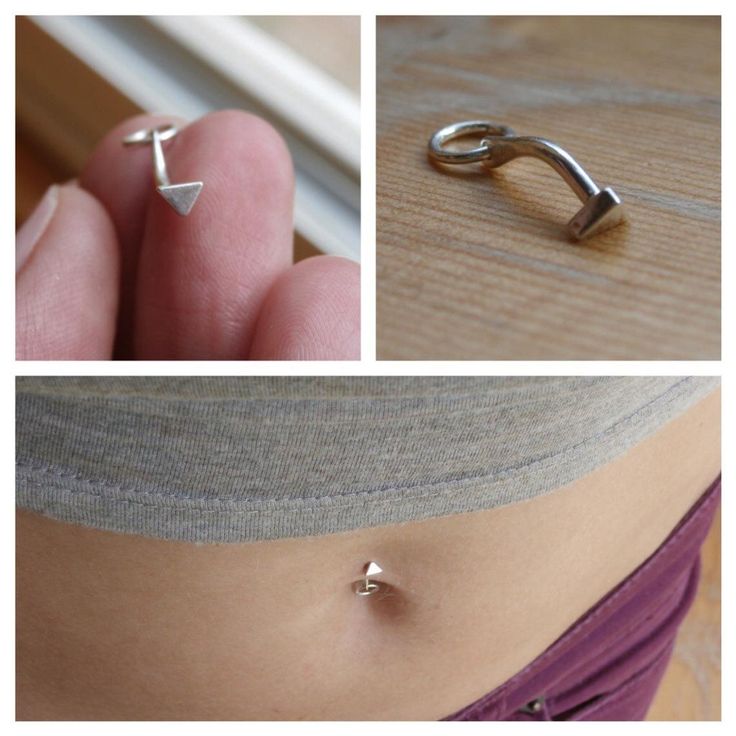 By that time, the left nipple had healed completely, only tiny scars remained at the puncture site, and I didn’t go anywhere.
By that time, the left nipple had healed completely, only tiny scars remained at the puncture site, and I didn’t go anywhere.
Drug treatment helped, which made me very happy. If the treatment did not work, then I would have to go to the surgeon.
Now I have only one puncture in my right chest, he is already ten months old. Recently, I touched it for hours - I hooked the ball of the rod with the strap and pulled a little. It was very unpleasant, but nothing painful like before. Looks like the wound has healed.
Doctor's conclusion While walking from the doctor, she told her husband what and howWhy piercing can be dangerous and how to prevent complications
Alesya Mukhina
cosmetologist
Piercing is an invasive procedure with damage to the skin and mucous membranes. The main complications are associated with skin trauma, although there may be dental problems with punctures of the tongue, lips, and cheeks.
Allergic reactions. There is a risk of an allergic reaction to anesthesia - lidocaine is most commonly used, and contact dermatitis to metal. The specialist who performs the piercing must definitely clarify whether the client had an allergy before. It is worth choosing jewelry from metals, to which the risk of allergic reactions is minimal. This is, for example, gold or titanium.
There is a risk of an allergic reaction to anesthesia - lidocaine is most commonly used, and contact dermatitis to metal. The specialist who performs the piercing must definitely clarify whether the client had an allergy before. It is worth choosing jewelry from metals, to which the risk of allergic reactions is minimal. This is, for example, gold or titanium.
Purulent complications at the puncture site. This is a local inflammatory reaction that may occur two to three days after the procedure. It is associated either with a violation of the rules of asepsis and antisepsis during the procedure, or with improper care and non-compliance with recommendations after. Its signs: redness, swelling, pain at the puncture site, pus. In this case, you need to see a doctor as soon as possible.
Formation of keloid scars at the puncture site. This is a specific type of pathological scar that can grow very large. The master must clarify whether the client had such scars before, and if so, it is better not to do the procedure.![]()
Infection with HIV, hepatitis B and C viruses. The main reason here is the violation of the procedure rules, the use of non-sterile instruments. These are chronic infections with an incubation period of three to six months. As a rule, at the initial stages they have no symptoms, therefore, such an infection can be detected only with the help of laboratory tests, then treatment by an infectious disease specialist is needed.
How much I spent on piercing, treatment and restoration
The cost of piercing may vary for masters. I did it in the studio of Nizhny Novgorod, before the trip I also googled Moscow and St. Petersburg - the cost is about the same. I spent 3400 R for the piercing - this is a piercing of both nipples at a time and two titanium rods.
Wound care and treatment of complications took 2357 R:
- Appointment with a mammologist in a private clinic - 1700 R.
- Antibiotic course and syringes for washing the wound - 365 R.

- Special plasters with which I sealed the nipples for the first days - 292 R. Miramistin, which I also needed, I already had.
2357 R
I spent on the treatment of complications after a puncture
During that period I actively maintained social networks and described in detail the entire long-awaited procedure. As my condition worsened, I wrote to the craftswoman who made my punctures and consulted with her. As a result, when I already went to the doctor and told about it in stories, she offered to return the money to me for one puncture.
| Payment for piercing | Special patches for the first five days of healing |
| Payment for a doctor and medication | I got 1700 R for the left puncture and jewelry back. This just covered an appointment with a mammologist |
Payment for the piercing
Special patches for the first five days of healing
Payment for the doctor and medication
1700 R for the left piercing and jewelry I received back. This just covered an appointment with a mammologist
This just covered an appointment with a mammologist
I spent 4057 R on piercing and treatment of complications
| Piercing minus refund | 1700 Р |
| Mammologist's appointment | 1700 Р |
| Treatment of complications | 365 P |
| Special plaster | 292 Р |
Piercing minus refund
1700 R
Mammologist's appointment
1700 R
Treatment of complications
365 R
Special patch
292 R
Summary
- Piercing is a great way to feel in control of your body and your life. And it's beautiful.
- The Association of Professional Piercers operates in Russia. They have rules and brochures on their website that you should study before going to the master.
- Piercing should be done by a trusted master - they can also be found on the websites of piercer associations.
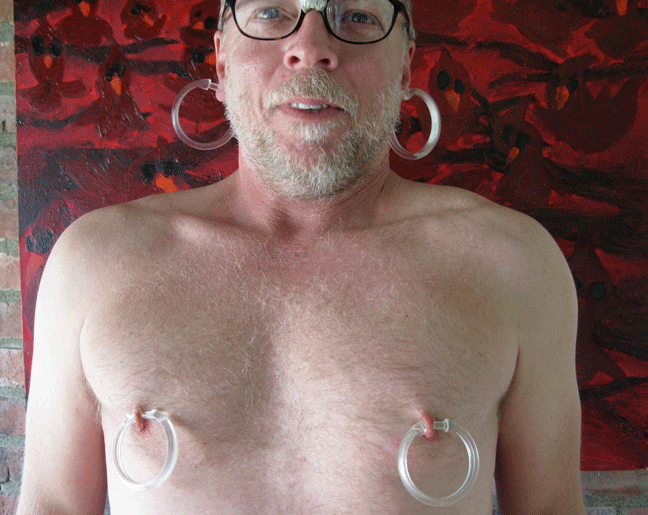
- Good piercers and studios adhere to the rules of professional associations, as well as legal requirements. For example, they issue a license.
- Piercing takes a long time to heal, but piercing the body hurts. There is no anesthesia. Be mentally prepared for this.
- Even with the best possible care, there are complications. If everything seems to be in order, but it doesn’t go away for a long time, write to your master. If the temperature rises, the puncture site hurts, discharge appears - go to the doctor.
Breastfeeding with pierced, flat or inverted nipples
The shape and size of nipples can vary greatly from woman to woman. Our practical tips will help you make breastfeeding easier, no matter what your nipples are.
Share this information
Most women's nipples protrude, enlarge and swell when touched, but some have flat or even inward nipples. In addition, some women pierce one or both nipples. Usually flat, inverted or pierced nipples do not cause problems when breastfeeding, but in some cases additional help may be needed.
Usually flat, inverted or pierced nipples do not cause problems when breastfeeding, but in some cases additional help may be needed.
“Don't panic if you have flat or inverted nipples. As a rule, this does not interfere with breastfeeding in any way,” says Shawnad Hilton, a lactation consultant, health visitor and newborn care specialist who has worked with Medela in the UK for more than a decade. “Remember that your baby takes into his mouth not only the nipple, but also part of the breast.”
However, in the early days, when the baby's mouth is still very small and suckling skills have not developed, inverted or flat nipples can make feeding difficult, especially if the baby is unwell or born prematurely.
“Flat or inverted nipples may not reach the baby's palate and therefore not trigger the sucking reflex,” Schoned explains. “That is, the baby may have trouble grasping and holding the breast in the mouth, and the baby will not get enough milk.”
How to tell if you have flat or inverted nipples
Flat nipples 1 do not protrude much from the areola (the darker
area surrounding the nipple) even when stimulated.
Inverted nipples seem to be recessed in the center. They may look like this all the time or only if they are stimulated. Sometimes inverted nipples are on the same level with the areola, and sometimes even sink deep into the breast tissue.
This feature may occur on one or both nipples. It is estimated that approximately 10% of nulliparous women have at least one retracted nipple. 2 If you're not sure which nipples you have, try a simple pinch test: Gently pinch your breasts with your thumb and forefinger on both sides of the areola. The nipple should come forward. If your nipple hides inside, creating a depression, then it is retracted.
Preparing inverted and flat nipples during pregnancy
You may have noticed that your breasts have changed during pregnancy and your nipples have become more protruding. If this does not happen and you are worried that the shape of your nipples will make breastfeeding difficult, try using nipple formers* in consultation with your doctor. These are soft and flexible silicone discs that are discreetly placed in the bra and slightly squeeze the nipples, helping to pull them out.
These are soft and flexible silicone discs that are discreetly placed in the bra and slightly squeeze the nipples, helping to pull them out.
“In a normal pregnancy, nipple formers can be worn from 32 weeks,” advises Schoned. - Start wearing them for an hour a day, gradually increasing the time to eight hours. If you have an incompetent (weakened) cervix or are at risk of preterm labor, check with your healthcare provider about when you can start using shapers, as nipple stimulation can trigger contractions.”
“Nipple formers can continue to be worn after childbirth,” adds Schoned. “Try to put them in a bra 30 to 60 minutes before feeding.”
“I have inverted nipples, and after two or three weeks of constantly trying to latch on, I almost switched to formula,” recalls Nina, a mother from Germany. “I turned to La Leche Liga for help, and one nice woman came to me and supported me to continue to feed. She suggested trying nipple shapers and they really helped me. Somehow my baby began to understand what to do! Breastfeeding went well and I nursed him until he was 21 months old. ”
”
Helping your baby latch on to flat or inverted nipples
If your baby enjoys sucking on your thumb but isn't as interested in your breasts, chances are your nipple isn't reaching the palate. The baby may become nervous, push off the breast and cry or even fall asleep on your chest. If this happens, ask a lactation consultant or healthcare professional to check the grip.
There are several tricks you can use before every feed to make your nipples more comfortable to latch on to. Schoned recommends the following:
- twist the nipple between thumb and forefinger so that it protrudes better;
- Place fingers in a "V" or "C" shape and squeeze the breast just behind the areola to push out the nipple;
- apply a cold compress or ice cube to the nipple to push it forward;
- Express milk manually or with a breast pump for a couple of minutes before feeding so that the nipple comes out more.
“I had a flat nipple, but I only found out about it when I noticed that Austin was having a hard time sucking on that side,” says Jennifer, mother of two in the UK. “From an anatomical point of view, there is nothing abnormal in this, it’s just that my nipple does not protrude so much, and this requires some skill when feeding. Before giving this breast, I always pinched and squeezed the nipple a little and tried to put it into the baby's mouth. It was a little difficult at first, but over time I learned.”
“From an anatomical point of view, there is nothing abnormal in this, it’s just that my nipple does not protrude so much, and this requires some skill when feeding. Before giving this breast, I always pinched and squeezed the nipple a little and tried to put it into the baby's mouth. It was a little difficult at first, but over time I learned.”
Using breast pads
If none of the above work and your baby still has difficulty latch-on, your lactation consultant or healthcare professional may recommend that you breastfeed with a breast pad*. They are thin and flexible nipple-shaped silicone funnels with holes at the tip through which milk will flow.
It is easier for the baby to put the feeding pad in his mouth, as it is larger and more rigid. In addition, such an overlay will reach him to the sky, causing a sucking reflex. Do not use nursing pads for a long time. If you experience pain or other problems, contact your lactation consultant or healthcare professional to check that your baby is latching on properly with a breastfeeding pad. You will also need to monitor your baby's weight gain to ensure that milk production is meeting his needs. 3
You will also need to monitor your baby's weight gain to ensure that milk production is meeting his needs. 3
Over time, as your baby learns to suckle properly and your nipples get used to breastfeeding, you will be able to breastfeed without the pads.
“My nipples are rather flat. The doctor advised me nursing pads, and I was successfully able to feed my two babies,” says Ann-Sophie, mother of two from Sweden. “My secret is to make them adhere better to the skin, I lightly wet the edges before use.”
Breastfeeding with pierced nipples
Many women with pierced nipples find it does not affect their ability to breastfeed. However, jewelry must be removed before feeding, as the child may choke on them or injure their tongue, gums or palate.
“I had a nipple piercing, but I got it off a year later when I got pregnant because my breasts were very sensitive,” says Kelly, mother of three from the UK. “I breastfed my daughter exclusively, and then her two younger brothers, and never had any problems. And the pierced nipple was my favorite!”
And the pierced nipple was my favorite!”
Some women report that milk can leak from piercings, and others believe that piercing scars reduce milk production 4 - but this has not been well researched.
“You can't predict how a piercing will affect breastfeeding until milk production begins,” Schoned explains. - If you are concerned, talk to a lactation consultant or healthcare professional. And remember that one breast may be enough for babies to get the nutrition they need if there are problems with the second. ”
What to do if you can't breastfeed with flat or inverted nipples
If you've tried all the options and still can't breastfeed, you still shouldn't deprive your baby of breast milk.
“Mom and baby's health is the most important thing,” says Schoned. “Maybe you should switch to full pumping and feed your baby only expressed milk. You can also try the supplementary feeding system** where the baby continues to feed at the breast while receiving additional expressed milk through a tube. That is, the baby will still suck on the breast and stimulate the production of milk, which, in turn, will help you pump even more.
That is, the baby will still suck on the breast and stimulate the production of milk, which, in turn, will help you pump even more.
“I have inverted nipples. After the disastrous experience of breastfeeding my first son with my second, I decided to get my way after all,” says Babettli, mother-of-two from Italy. - On the advice of experts, I tried nipple formers and nursing pads, but everything was unsuccessful. In the end, pumping with the Medela Symphony*** Double Electronic Clinical Breast Pump proved to be the best solution for us. I fed exclusively on expressed milk for up to four months.”
Care for different types of nipples
Flat or inverted nipples may require extra care as the baby may squeeze them harder and they may become inflamed at first. Tips on how to care for sore nipples can be found in Nursing Nipple Care.
If your nipples become inverted after a feed, any moisture can lead to inflammation and increase the risk of infections, including thrush. Blot your nipples dry after each feed before they have time to hide inside.
Blot your nipples dry after each feed before they have time to hide inside.
With swelling of the mammary glands, when even protruding nipples can become flat, flat or inverted nipples can be difficult. Read the helpful tips in the article on breast swelling.
The good news is that continuous breastfeeding or pumping can change the shape of your nipples and breastfeeding will become easier over time. With the arrival of the next child, you may not have to face this problem at all, as happened with Leanne, a mother of two from the UK.
“The second feeding was like a fairy tale,” she says. “After almost four months of pumping for my first son, my flat nipples were so extended that with my second son I no longer had to use breast pads - he was able to suck directly from the breast. The youngest is now nine months old and I still breastfeed him.”
Literature
1 Pluchinotta AM. The Outpatient Breast Clinic. Springer International Publishing ; 2015.![]() - Pluchinotta A.M., "Treatment of breast diseases on an outpatient basis". Springer International Publishing. 2015.
- Pluchinotta A.M., "Treatment of breast diseases on an outpatient basis". Springer International Publishing. 2015.
2 Alexander JM, Campbell MJ. Prevalence of inverted and non-protractile nipples in antenatal women who intend to breast-feed. The Breast . 1997;6(2):72-78. — Alexander JM, Campbell MJ, "Prevalence of inverted and intractable nipples in pregnant women who intend to breastfeed." The Brest (Chest). 1997;6(2):72-78.
3 McKechnie AC, Eglash A. Nipple shields: a review of the literature.Breastfeeding Medicine. 2010;5(6):309-314. — McKechnie A.S., Eglash A., "Nipple Covers: A Review of the Literature". Brestfeeding Medicine (Breastfeeding Medicine). 2010;5(6):309-314.
4 Garbin CP0577 , Rowan MK , Hartmann PE , Geddes DT .![]()




